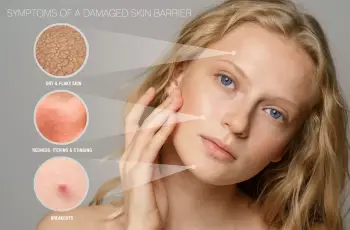
9 Types of Facials: Benefits and What to Know Before Trying Them
Feeling refreshed and glowing is something we all enjoy. That’s exactly what a well-done facial can deliver. But did you know that there are many different kinds of facials, each with its own purpose?
Whether you’re new to skin care or a facial enthusiast looking to try something new, this guide breaks down 9 types of facials, what they do, and who they’re best for.
Let’s dive into this world of relaxing, rejuvenating, and sometimes high-tech skin treatments.
What Is a Facial?
A facial is a skin treatment aimed at improving your complexion. It can involve cleansing, exfoliating, hydrating, or using specialized tools and techniques for specific skin concerns.
Not all facials are the same. Some are spa-style treatments focused on relaxation. Others are more clinical and target skin problems like acne or hyperpigmentation.
You can get a facial at a day spa, a med spa, or a dermatologist’s office. But not every type of facial is available at every location.
Some facials involve tools or products that are best administered under medical supervision. So, if you have skin conditions like rosacea or psoriasis, consult a dermatologist first.
Dr. Marisa Garshick, a board-certified dermatologist, explains that facials vary greatly. Some focus on massage and moisture. Others target pore cleansing, dead skin removal, and collagen boosting.
Important Note Before You Book a Facial
Facials are not a replacement for seeing a dermatologist. If you have persistent skin issues or concerns, it’s essential to get professional medical advice first.
Dr. Jody Levine, a board-certified dermatologist, emphasizes that while facials can support skin health, only doctors can prescribe certain treatments for conditions like acne or rosacea.
If you’re unsure about which facial to try or have specific skin concerns, talk to a professional first. They can guide you toward the safest and most effective options.
9 Types of Facials to Consider
Here’s a closer look at nine facial treatments worth trying. Each has unique benefits depending on your skin goals and needs.
1. Classic Facial (aka Deep Cleansing or Hydrating Facial)
This is the most traditional and widely available facial type. It’s often what people think of when they picture a spa day.
Classic facials typically involve cleansing, exfoliation, extraction, and moisturizing. They’re gentle and suitable for most skin types.
Extractions help clear clogged pores, which can improve your skin’s texture and clarity. Some classic facials may also include a facial massage or mask.
This treatment is great for first-timers. It leaves your skin looking fresh, hydrated, and glowing—but results are usually temporary.
If you have sensitive skin, ask about the products used. Look for a facial tailored to your skin type to avoid irritation.
2. LED Light Therapy Facial
This futuristic-sounding facial uses different wavelengths of LED light to target skin concerns without discomfort.
Red light promotes collagen production and may reduce fine lines. Blue light can help kill acne-causing bacteria and soothe inflammation.
Celebrity esthetician Kristin Gunn notes that LED light is absorbed at different depths to trigger specific reactions, improving skin health over time.
The treatment is painless and typically takes 20–30 minutes. You may need multiple sessions to see lasting results.
At-home LED masks can be used between professional treatments for added benefits, although they are less powerful.
This type of facial is ideal for people with acne, redness, or mild signs of aging.
3. Microneedling Facial
Microneedling uses a tool with tiny needles to create microscopic punctures in the skin. This prompts your body to heal and produce more collagen.
It’s like a workout for your skin. Dr. Kellie Reed explains that this treatment is great for acne scars, fine lines, and skin texture.
Microneedling is especially beneficial for people with darker skin tones looking to treat hyperpigmentation safely.
Because it’s minimally invasive, you’ll need time to heal post-treatment. Redness and mild sensitivity are common for a few days.
If you’re targeting specific concerns like scarring or dullness, microneedling may offer long-term improvements.
4. IPL Photo Facial (Intense Pulsed Light)
IPL facials use pulses of broad-spectrum light to target pigmentation issues like sunspots and visible blood vessels.
The light penetrates the skin and breaks down unwanted pigment or vessels. These are then absorbed naturally by the body.
Dr. Reed says it’s especially effective for sun damage, freckles, and rosacea-related redness.
Avoid this treatment if you have melasma, as IPL can sometimes worsen pigmentation in these cases.
Multiple sessions are usually required for the best results. Each session can leave skin slightly red but improves over time.
5. HydraFacial
A HydraFacial is a three-step treatment that combines cleansing, extraction, and hydration using a special machine.
It removes debris from pores using gentle suction and infuses skin with hydrating serums.
This facial can also include a light chemical peel to enhance exfoliation and improve tone.
It’s safe for most skin types, including sensitive or acne-prone skin, but not ideal if you have active skin infections or severe rosacea.
HydraFacials provide immediate results—smooth, glowing skin without downtime. They’re great before events or for monthly maintenance.
6. Chemical Peel
Chemical peels involve applying a mild acid solution—like glycolic or salicylic acid—to remove dead skin cells.
This helps improve skin tone, texture, and brightness. There are different peel strengths based on your skin goals and sensitivity.
Dr. Levine often uses glycolic acid peels as an introductory option. They’re quick, effective, and can be done in-office.
Some people experience peeling afterward, while others do not. It depends on your skin type and the strength of the peel.
Be sure to follow post-peel care instructions. Sun protection is especially important during recovery.
7. Firming or Sculpting Facial (Microcurrent or Radiofrequency)
These facials aim to lift and tone your face using tools like microcurrent devices or radiofrequency.
Microcurrent uses low-level electricity to stimulate muscles and collagen production. This results in firmer, more contoured skin.
Radiofrequency heats the deeper layers of skin to encourage tightening and smoothing.
Aesthetic nurse Jackie Spagnuolo says that while results are subtle at first, regular treatments can lead to more lasting improvements.
These facials are great if you’re looking to sculpt jawlines, reduce puffiness, or fight signs of aging without injections.
8. Microdermabrasion
This exfoliating treatment uses fine crystals or a diamond-tipped wand to buff away the top layer of skin.
It helps improve dullness, fine lines, and mild scarring. You’ll notice an immediate glow and smoother texture.
However, microdermabrasion can irritate sensitive or acne-prone skin. Talk to your esthetician about whether it’s right for you.
Avoid this facial if you have rosacea, eczema, or a history of scarring.
The results are short-term, but regular sessions can improve overall skin appearance.
9. Dermaplaning
Dermaplaning is like a professional face shave—but with added skin benefits.
Using a sterile blade, your provider gently scrapes off dead skin cells and peach fuzz. The result? Brighter, smoother skin.
This facial is ideal before makeup application or events, as it creates a flawless canvas.
Those with dry or sensitive skin should consider “oilplaning,” which uses oil to minimize friction and irritation.
Dermaplaning is painless and has zero downtime, but it should be done by a trained professional to avoid nicks or skin damage.
Final Thoughts: Which Facial Is Right for You?
The best facial for you depends on your skin type, concerns, and overall goals. Whether you want relaxation, clear pores, or younger-looking skin, there’s a facial that fits.
Before booking, always talk to a licensed provider. They can help you decide which treatment is best for your needs and whether it should be combined with other skincare.
For long-term skin health, pair facials with a consistent home routine and regular dermatology visits. That way, you’re not just treating your skin—you’re taking care of it.


